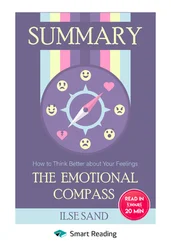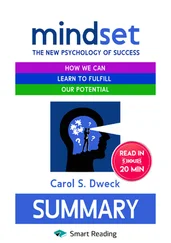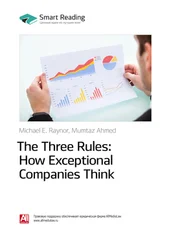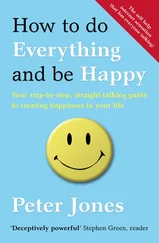Ariely, D. (2008). Predictably irrational. New York: HarperCollins.
Asimov, I. (1989). The relativity of wrong. Skeptical Inquirer, 14, 35–44.
Associated Press. (2007, April 24). Can aspirin prevent cancer? The answer is not clear.
Associated Press. (2010, September 7). Safety board renews call for young to fly in own seats. Wall Street Journal, A14.
Attari, S. Z., DeKay, M. L., Davidson, C. I., & Bruine de Bruin, W. (2010). Public perceptions of energy consumption and savings. Proceedings of the National Academy of Sciences, 107, 16054–16059.
Ayres, I. (2007). Super crunchers: Why thinking by numbers is the new way to be smart. New York: Bantam Books.
Azar, B. (1999, November). Crowder mixes theories with humility. APA Monitor, p. 18.
Baker, T. B., McFall, R. M., & Shoham, V. (2009). Current status and future prospects of clinical psychology: Toward a scientifically principled approach to mental and behavioral health care. Psychological Science in the Public Interest, 9, 67–103.
Baker, T. B., & Velez, W. (1996). Access to and opportunity in postsecondary education in the united states: A review. Sociology of Education, 69, 82–101.
Banerjee, A., & Duflo, E. (2009). The experimental approach to development economics. Annual Review of Economics, 1, 151–178.
Barnes, R., Keilholtz, L., & Alberstadt, A. (2008). Creationism and evolution beliefs among college students. Skeptic, 14(3), 13–16.
Barnett, A. (2011, December 20). Is 27 really a dangerous age for famous musicians? A retrospective cohort study. British Medical Journal. Retrieved December 28, 2011, from http://www.bmj.com/press-releases/2011/12/20/27-really-dangerous-age-famous-musicians-retrospective-cohort-study.
Baron, J. (1998) . Judgment misguided: Intuition and error in public decision making. New York: Oxford University Press.
Baron, J. (2008) . Thinking and deciding (4th ed.). Cambridge, MA: Cambridge University Press. Baron-Cohen, S. (2005) . Autism: The facts. Oxford: Oxford University Press.
Bartels, L. M. (2008) . Unequal democracy: The political economy of the new gilded age. Princeton, NJ: Princeton University Press.
Bartoshuk, L. (2009, September). Spicing up psychological science. APS Observer, 22, 3–4.
Baumeister, R. F., Campbell, J. D., Krueger, J. I., & Vohs, K. D. (2003) . Does high self-esteem cause better performance, interpersonal success, happiness, or healthier lifestyles? Psychological Science in the Public Interest, 4, 1–44.
Baumeister, R. F., Campbell, J. D., Krueger, J. I., & Vohs, K. D. (2005) . Exploding the self-esteem myth. Scientific American, 292(1), 84–91.
Baumeister, R. F., Vohs, K. D., & Funder, D. C. (2007) . Psychology as the science of self-reports and finger movements. Perspectives on Psychological Science, 2, 396–403.
Beck, D. M. (2010) . The appeal of the brain in the popular press. Perspectives on Psychological Science, 5, 762–766.
Beck, M. (2008, November 4). And you thought the debate over fluoridation was settled. Wall Street Journal, p. D1.
Begley, S. (2008, November 3). Why we believe. Newsweek, pp. 56–60.
Begley, S. (2009, October 12). Ignoring the evidence: Why do psychologists reject science? Newsweek, p. 30.
Begley, S. (2010, February 8). The depressing news about antidepressants. Newsweek, pp. 34–42.
Bem, D. (2011) . Feeling the future: Experimental evidence for anomalous retroactive influences on cognition and affect. Journal of Personality and Social Psychology, 100, 1–19.
Benedetti, F., Carlino, E., & Pollo, A. (2011) . How placebos change the patient’s brain. Neuropsychopharmacology, 36, 339–354.
Benjamin, L. T. (2004) . Behavioral science and the Nobel Prize: A history. American Psychologist, 58, 731–741.
Benson, E. S. (2006a, June). All that’s gold does not glitter: How the Golden Fleece tarnished psychological science. APS Observer, 19, 12–19.
Benson, E. S. (2006b, January). Emotion, perception, cognition—it’s all part of really intelligent design. APS Observer, 19, 22–24.
Benson, H., et al. (2006) . Study of the therapeutic effects of intercessory prayer in cardiac bypass patients. American Heart Journal, 151, 934–942.
Berkowitz, L., & Donnerstein, E. (1982) . External validity is more than skin deep. American Psychologist, 37, 245–257.
Berliner, D. C., & Biddle, B. (1995) . The manufactured crisis: Myths, fraud, and the attack on America’s public schools. Reading, MA: Addison-Wesley.
Bernstein, L. (2009, November 4). Stretching debate continues. The Oregonian, p. C2.
Bilmes, L. J., & Stiglitz, J. E. (2009, January). The $10 trillion hangover. Harper’s Magazine, 318, 31–35.
Binga, T. (2009) . Skeptical books for children and young adults. Skeptical Inquirer, 33(6), 43–44.
Birnbaum, M. H. (1999) . Testing critical properties of decision making on the Internet. Psychological Science, 10, 399–407.
Birnbaum, M. H. (2004) . Human research and data collection via the internet. Annual Review of Psychology, 55, 803–832.
Bjorklund, D. F. (2011) . Children’s thinking: Cognitive development and individual differences (5th ed.). Stamford, CT: Wadsworth.
Blass, T. (2004) . The man who shocked the world: The life and legacy of Stanley Milgram. New York: Basic Books.
Blastland, M., & Dilnot, A. (2009) . The numbers game: The commonsense guide to understanding numbers in the news, in politics, and in life. New York: Gotham Books.
Bloom, P., & Weisberg, D. S. (2007) . Childhood origins of adult resistance to science. Science, 306, 996–997.
Bluming, A., & Tavris, C. (2009) . Hormone replacement therapy: Real concerns and false alarms. The Cancer Journal, 15, 93–104.
Bogle, J. C. (2010) . Common sense on mutual funds. Hoboken, NJ: John Wiley.
Borenstein,M.,Hedges,L.V.,Higgins,J.,& Rothstein, H. (2009) . Introduction to meta-analysis (Vol. 1). Hoboken, NJ: Wiley.
Bower, B. (2009, June 20). Think like a scientist. Science News, 175, 20–23.
Boyd, R. (2008, February 7). Do people only use 10 percent of their brains? Scientific American. Retrieved November 17, 2009, from http://www.sciam.com/article. cfm?id=people-only-use-10percent-of-brain on Boyer, P. (2010, September 6). The covenant. The New Yorker, pp. 60–69.
Brainerd, C. J., & Reyna, V. F. (2005) . The science of false memory. Oxford: Oxford University Press.
Breitmeyer, B. J., & Ramey, C. T. (1986) . Biological nonoptimality and quality of postnatal environment as codeterminants of intellectual development. Child Development, 57, 1151–1165.
Broadbent, D. E. (1958) . Perception and communication. New York: Pergamon Press.
Broadbent, D. E. (1973) . In defense of empirical psychology. London: Methuen.
Brody, J. E. (2008, December 10). Weightloss guides without gimmicks. New York Times, p. D7.
Brody, J. E. (2011, September 13). Attacking the obesity epidemic by first figuring out its cause. New York Times, p. D7.
Brody, J. E. (2012, January 24). Dental exam went well? Thank fluoride. New York Times, p. D7.
Bronfenbrenner, U., & Mahoney, M. (1975) . The structure and verification of hypotheses. In U. Bronfenbrenner & M. Mahoney (Eds.), Influence on human development. Hinsdale, IL: Dryden.
Bronowski, J. (1956) . Science and human values. New York: Harper & Row.
Bronowski, J. (1973) . The ascent of man.
Boston: Little, Brown. Bronowski, J. (1974) . Science, poetry, and human specificity. American Scholar, 43, 386–404.
Bronowski, J. (1977) . A sense of the future. Cambridge, MA: MIT Press.
Bronowski, J. (1978a). The common sense of science. Cambridge, MA: Harvard University Press.
Bronowski, J. (1978b). Magic, science, and civilization. New York: Columbia University Press.
Bronson, P., & Merryman, A. (2009) . Nurtureshock. New York: Twelve.
Читать дальше












